Gigabyte K8NNXP-940: Built on Athlon64 FX51 Strengths
by Wesley Fink on October 9, 2003 11:52 PM EST- Posted in
- Motherboards
Gigabyte K8NNXP-940: Board Layout
The Gigabyte has one of the best board layouts that you will find with few tradeoffs that can make installation more difficult, and one glaring fault in the layout, which may be unavoidable. The full ATX-size motherboard allows placement of connectors and ports in their best location.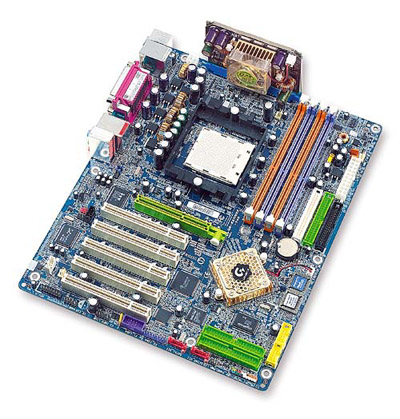
The clear blue board with rounded corners is instantly recognizable as trademark Gigabyte. As you can see, the single-chip nForce3-150 gives designers a little more room for a better board design.
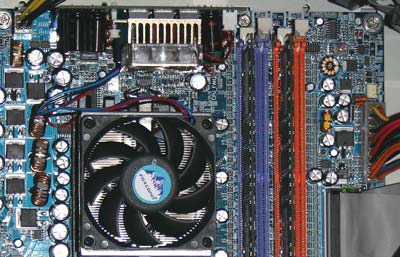
Unlike Athlon XP motherboards, we see a standardized ATX plus 12V connector arrangement on the Athlon64 and FX51 boards we have seen. This is identical to the power connector requirements of current Pentium 4 systems. We generally prefer the connectors together on the upper right of the board, but Gigabyte's placement of the 20-pin ATX to the upper right and the 12V at the top left of the processor socket is acceptable and should allow for decent cable placement.
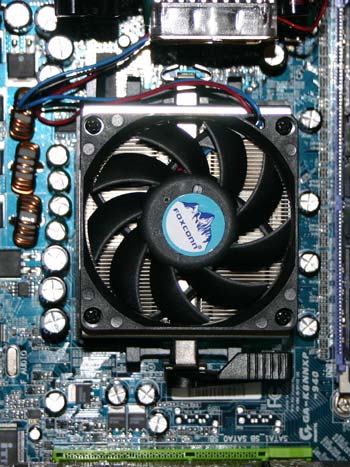
There is plenty of room around the north-to-south sides of the CPU socket, even with the new and much larger Athlon64/64FX heatsink “cage”. Gigabyte has placed the CPU socket away from the top edge to make room for the DPS-K8 power module.
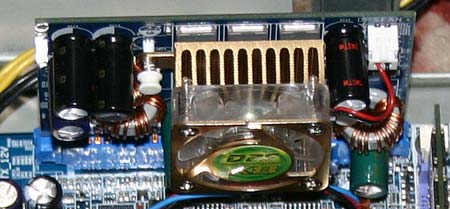
The location of the DPS board on the top edge of the motherboard can be a potential problem in some case designs. It works well in full-tower cases, but many case designs have a downward facing fan to cool the CPU and will be blocked by the DPS-K8 module. With the careful attention to placement of components on the K8NNXP-940, we assume that Gigabyte must have a good reason for choosing this location. You could probably also argue that this location assures the power board stays cool.
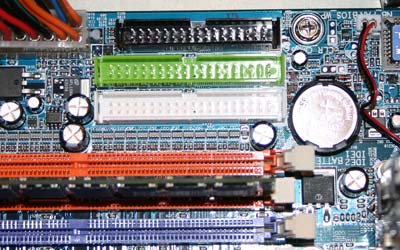
The Floppy connector and Primary/Secondary IDE connectors are all in ideal positions. They are in our preferred position above the midline of the board and to the right of the memory slots. This position on the top right edge of the board works well with cable arrangements in almost any case.
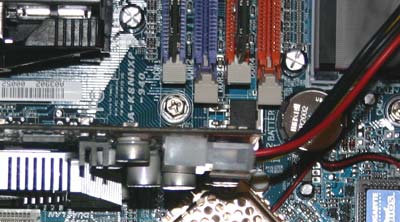
The memory slots are arranged so they do not interfere with the AGP card in any way. Changing or adding memory is easy with this arrangement. Gigabyte also uses their EZ-fix AGP lock, which is one of the better designs for securing the AGP card.










35 Comments
View All Comments
Anonymous User - Saturday, October 11, 2003 - link
Hmm.. something just occured to me. (This is #24 again.) Anyone else remember the days of the Pentium and Pentium Pro? Well, it seems like we may be reentering the whole "high-end CPUs are different from midrange ones in ways other than clock speed" thing.. except this time around, the Macs aren't faster (the G5 and its super-deep pipeline can kiss my ass, thanks.. and probably the Hammer's while it's at it), and there are two companies in the game. This is going to be fun.Anonymous User - Saturday, October 11, 2003 - link
Hey, why isn't the Nehalem in this review? So what if it doesn't exist? They've got like 80% of it planned out now anyway, it's unfair to have this review biased towards AMD.Well, SOMEONE had to be ignorant and stupid, and hell if I'm going to say a thing about the Pentium 4 Xeon MP Edition.
Uh. Anyway. The Athlon FX may just be a rebranded Opteron, but it's cheaper than the rebranded Xeon MP and much better at its job, so who cares what's a rebranded what? Not that I'd ever buy an Athlon 64 at these prices, but it seems the only market sector Intel has left is the low high end :D
Anonymous User - Friday, October 10, 2003 - link
Excellent review! I'll be reading all of your writings from now on. :Dsandorski - Friday, October 10, 2003 - link
Sweet motherboard, makes me think that as Athlon 64/FX motherboards mature, more performance will be acheived.Anonymous User - Friday, October 10, 2003 - link
Haha, good point #20!Anonymous User - Friday, October 10, 2003 - link
#12, perhaps because P4EE does not exist...Anonymous User - Friday, October 10, 2003 - link
When will this board be released?Reflex - Friday, October 10, 2003 - link
#11: I am not reffering to Quad-Channel DDR as I think you believe. I am reffering to Quad-Data Rate SDRAM. It uses the same pin count as DDR but sends information four times per clock, resulting in twice the bandwidth as DDR. If AMD supported it in their on board controller it would not require a higher pin count.However there must be some technical reason for QDR not appearing by now since its been 'just around the corner' for over two years now...
Anonymous User - Friday, October 10, 2003 - link
Mostly I meant that running hand-compiled 64-bit apps would be irrelevant. I'd love to see another article in a few months, when Linux apps start actually arriving in 64-bit versions. But until then, it would be akin to Tom's OC'ing the P4EE. It may be interesting to a few people, but it would appear biased to almost everyone else.Anonymous User - Friday, October 10, 2003 - link
#15, 64-bit tests running linux would not be relevant? what about those of us who are running linux right now? I for one would love to see a 64-bit set of linux benchmarks included.